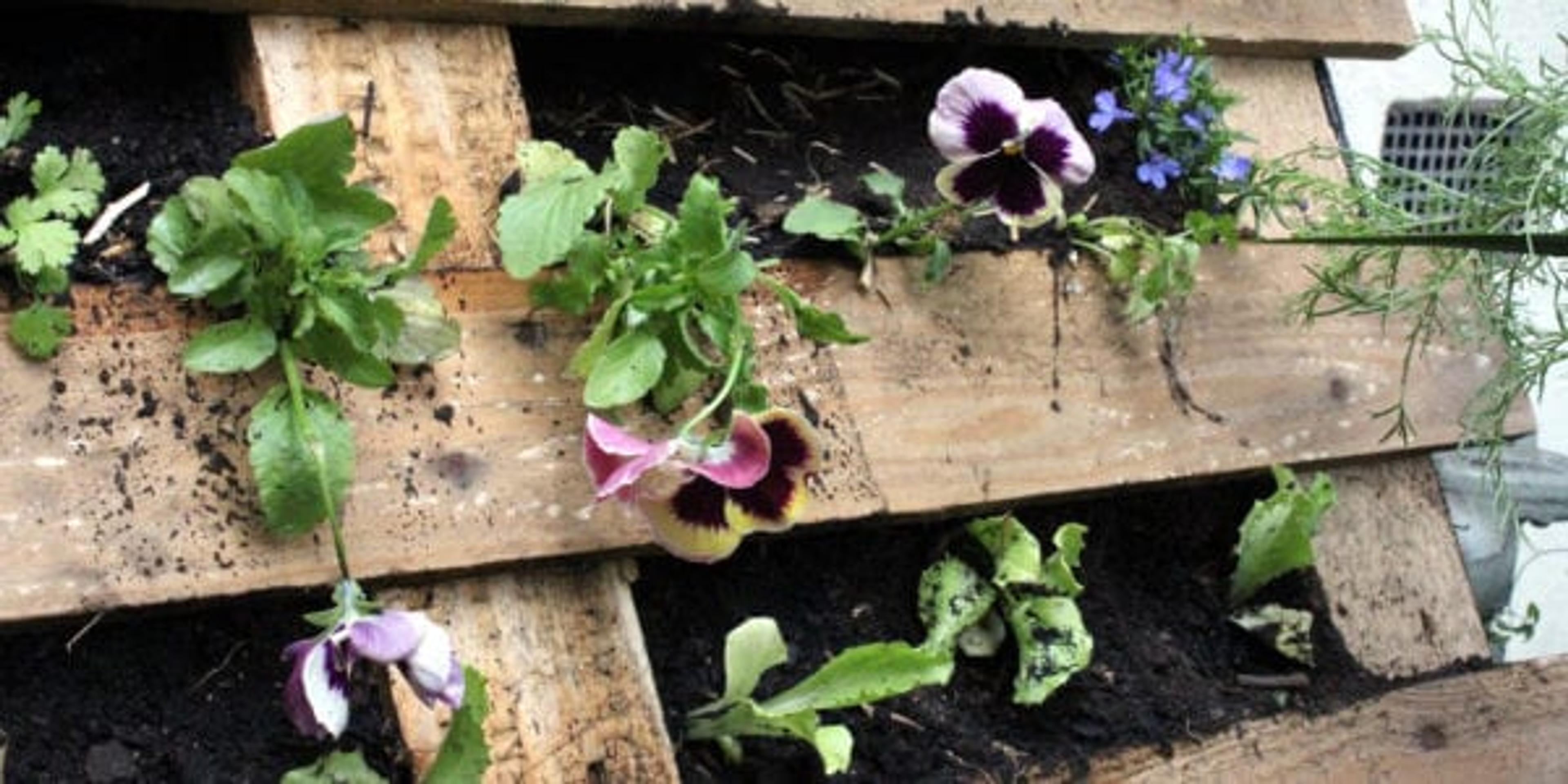No Yard? Small Outdoor Space? Try Planting a Vertical Garden

Julie Bitely
| 3 min read

There’s nothing quite like picking your own fresh-grown vegetables from the garden.
However, for urban dwellers with little-to-no yard or for people in apartments, your options might feel limited. Instead of spreading seeds out, consider planting up if you have some vertical space that gets adequate sunlight.
Vertical gardens are an ideal way to flex your green thumb if you’re working with a small space. They can be planted on the side of a wall or fence and even the smallest vertical space can produce a decent yield if you plant and care for it properly. Having a wall of foliage, flowers or veggies is also a great way to conceal structural eyesores or to add a pop of nature if you’re surrounded by concrete.
Here are a few tips on how to get started with a vertical garden on your balcony, back porch, at your workplace or any other space that has a little height you can take advantage of.
- Assess your space. Take a day to observe your intended vertical planting space. Take notes on how much light it gets, including when it first gets light in the morning, when it’s partially shaded and when it’s full sun. This will help you choose plants that can thrive in your space and help you understand where they’ll be a good fit.
- Choose your plants. Now that you know the type of light you’re dealing with, select vegetation, flowers and veggies that will do well. If looks matter to you, select plants that vary in height and color for a visually appealing display. Consider some climbing plants, such as tomatoes, beans, peas, even melons to break up the space and make sure you research the type of yield you can expect so you don’t buy too much. With seeds, a little tends to go a long way.
- Pick your containers and plot your space. Based on how big your plants will get, select planting containers accordingly. Pinterest is a wonderful inspiration resource for the many different options out there you can use to build up your vision and it doesn’t have to be expensive – use old pallets, buckets, or planters you have on hand that could fill out inexpensive shelving or be hung by drilling a hole. Trellises can work well if you have a lot of climbing plants and they can also serve as an anchor for other planters up above. Roughly sketch out your wall space and play around with different formations, keeping in mind that climbing plants will ideally take up the base of your wall and their growth will need to be accounted for as you plan farther up.
- Plant, water, and enjoy. This part is pretty much like what you’d expect when tending to a horizontal garden, except your back might not ache as much the next day, another perk of the vertical trend!
If you liked this post, you might also enjoy:
Photo credit: various brennemans





